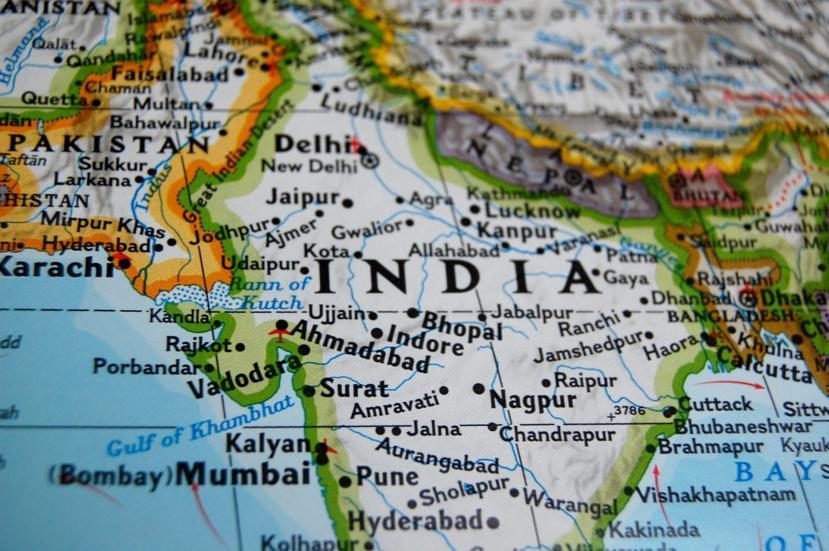High Prevalence of Celiac Disease in North India

Celiac disease is a genetic autoimmune disease that causes the patients to suffer attacks to the small intestine whenever they ingest products with gluten. It’s estimated that one in one hundred people worldwide suffer from celiac disease and that approximately one in ten people in north India suffer from celiac disease.
People with celiac disease are allergic to gluten, the generic name for a group of proteins found in most grain products, it can quite literally be considered a glue that helps food to retain its shape. When gluten is consumed by people with celiac their bodies cause the immune system to attack the small intestine. The villi inside of the intestines, the small protrusions that are responsible for absorbing nutrients, become damaged over time and the nutrients from food cannot be absorbed into the body.
Because of the way that symptoms present with celiac patients, it’s difficult for health care providers to diagnose without prior knowledge that first degree family members have the disease. This contributes to the low diagnostic rates. Due to the low nutrient absorption rate, people with celiac disease can still be malnourished even while having regular meals daily and are at risk for developing a host of other autoimmune diseases such as type I diabetes, osteoporosis, infertility issues and that may cause women to be prone to miscarriages, intestinal cancers and some neurological conditions such as migraines and epilepsy.
What Is Celiac Disease?
The symptoms of celiac disease in children and adults can be similar but in children there are some things that present that an adult would not be prone to. Some of the symptoms may alert a parent to that their child has celiac would be if others in the immediate and extended family suffer. Additionally in toddlers a failure to thrive, fatty or foul smelling stools, a short stature and a bloated and painful abdomen may all be signs that you should have your child tested. In older children, a short stature for the age group, chronic vomiting and diarrhea, failure to hit puberty benchmarks, weight loss and irritability are all symptoms.
Over thirty-four percent of people are diagnosed with celiac disease in adulthood, and in adults the symptoms may look different and are perhaps more worrying. Adults can suffer an array of symptoms from celiac disease. Bone and joint pain, unexplained anemia, seizure and migraines, fatigue, depression, peripheral neuropathy, liver and biliary tract disorders, canker sores, dermatitis and missed periods are all some of the things that should prompt someone to get tested for celiac disease, particularly if they are having these symptoms concurrently.
Celiac disease falls into three types, Classical, Non Classical and Silent Celiac. Classical celiac is the form that most people will experience that includes weight loss from malabsorption of nutrients and some of the side effects previously mentioned, this is the form that most commonly affects children.
Non-classical celiac is a form where sufferers will have mild stomach responses to gluten that involves distended abdomens with pain and constipation, reduced bones mass and bones that are prone to breaking and fracture, chronic fatigue along with other side effects associated with classical celiac. Silent celiac is often referred to as asymptomatic celiac because patients will not exhibit any outward signs of the disease but the villi of the small intestine will still suffer damage. Patients with silent celiac still benefit from a gluten free diet as a study showed that those who adopted one reported a decrease in flatulence, abdominal distention, acid reflux and better overall general health. .
People can determine if they have a gluten sensitivity is to completely eliminate products that contain gluten from the diet for at least sixty days and then reintroduce it. If your symptoms go away and then reappear after reintroduction, then chances are you have a gluten sensitivity. Another way to have a doctor run a panel of the following tests IgA antigliadin antibodies which are usually found in about eighty percent of diagnosed celiac patients, IgG anti-gliadin antibodies, IgG anti-gliadin antibodies, IgA anti-endomysial antibodies, Tissue Transglutaminase antibodies, Total IgA antibodies, Genetic testing with HLA DQ2 and HLA DQ8, Intestinal biopsy
What Does This Mean for India’s Celiac Population?
Gluten is also prevalent in almost all food items that are consumed the world over, finding gluten free food options have become more possible in the last few years, but in many places, even in developed countries, it’s still quite difficult and a severe health risk for people with celiac disease. The North Indian diet is incredibly gluten heavy, wheat flour is used to create the most simple things from chapati to naan which are used daily as food items that are consumed at almost every meal.
In large part most of the issue with is that while there are six to eight million diagnosed cases in North India with a population of almost three hundred million and seven percent of the world’s population, eight million is less than three percent of that population. This would lead one to believe that there many more undiagnosed cases. Because medical care is not as easily accessible in the very agriculturally oriented north, the potential that celiac disease could become a death sentence for many is real.
The incidences of celiac disease appear most often in the north Indian population not only because of the propensity to consume more wheat based products, but because this population possesses haplotypes that make it possible for the disease to develop. Reported cases of celiac disease started appearing in North India in the nineteen sixties and the case were mostly of children, but in South Indian states the disease is extremely rare having to do once again with the diet of Southern Indian states being mostly rice based rather than wheat. The wheat in question may be a part of the problem as well. Ancient forms of wheat were diploid meaning they only carried two sets of chromosome, while modern wheat is hexaploid. Diploid wheat is far less likely to induce celiac, but hexaploid wheat is the kind of wheat most common in Northern India. Studies suggest that switching to diploid wheat and implementing new infant feeding standards may curb the spread of celiac.
It has been a rather protracted battle to get patients to participate in a gluten free diet in North India, largely in part due to the under reporting of symptoms by those experiencing them and also because obtaining truly gluten free product not likely to be frozen or found in a supermarket is quite difficult in many areas. A general lack of education both within the healthcare community and overall community on what celiac disease is and is not tends to add to the difficulty in self-reporting as many dismiss their symptoms as normal gastrointestinal discomforts or evidence of some other less potentially dangerous issue.
Moving Forward
There however seems to be a push to get the Indian medical community more educated as was seen earlier this month, September 2017, when the sub-continent's top immunologists met at the International Celiac Disease Symposium where they hosted representative from twenty-seven countries to discuss what can be done about the growing celiac population. The group suggested outcomes and possible treatment protocols along with strategy of getting more people tested for the disease. There is work to be done and while it may take some time to get to a comfortable place in treating the celiac disease in North India, a start has at least been made.













